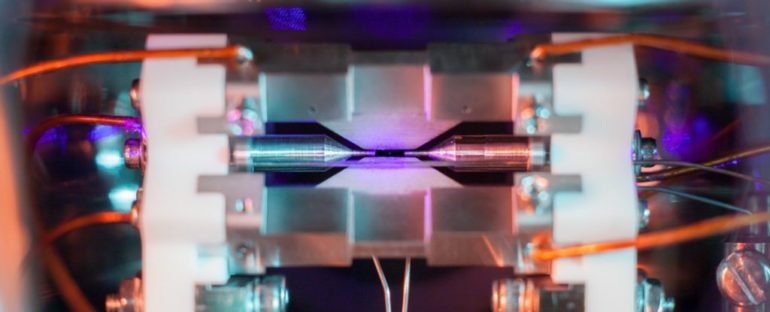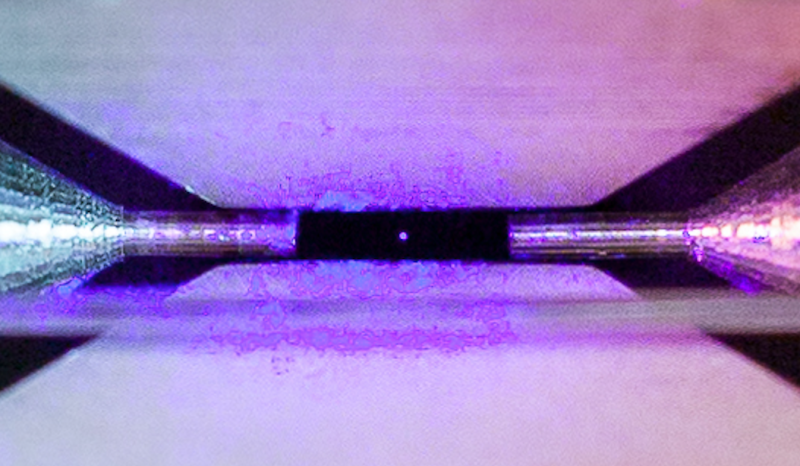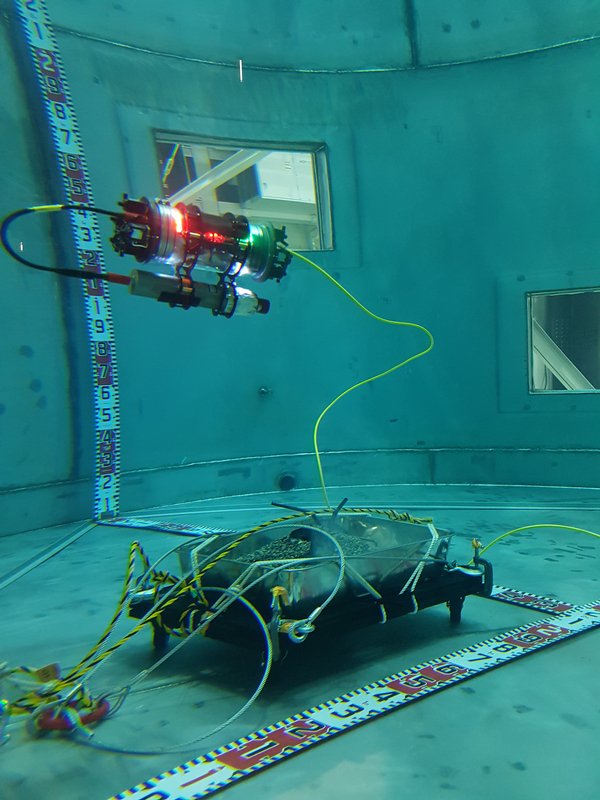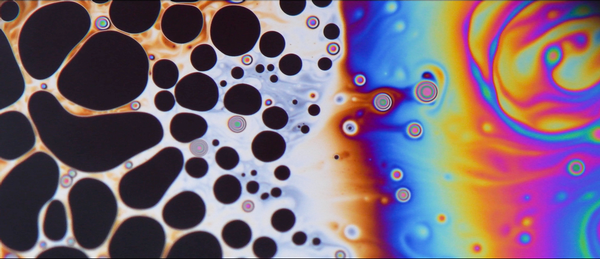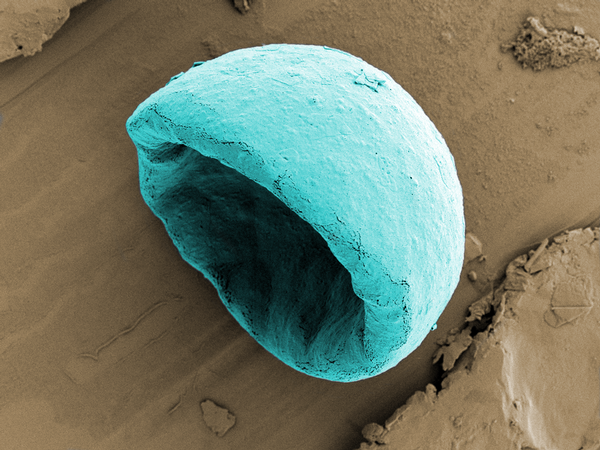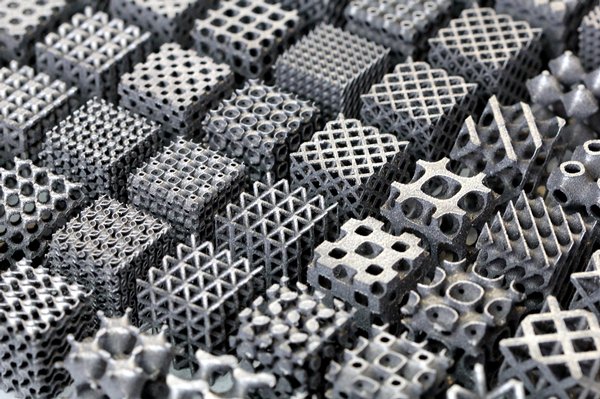The photo shows an isolated positively-charged strontium atom, in the very center of the image, suspended by electric fields. It is undoubtedly an extremely rare and priceless photograph of a trapped atom. But it also blows our mind how the tiny atom, a blue dot, is a building block of matter.
The Universe May Be Conscious, Say, Prominent Scientists.
Everything around us is these tiny dots of energy. The fact that we can finally see how one looks, is truly baffling. The core of the entire world is constructed with these minuscule specks of energy and that is really fascinating.
This magnificent image was captured by physicist David Nadlinger of the University of Oxford and it has received the top prize in UK’s Engineering and Physical Sciences Research Council photo competition.
A lot of effort went behind the set up for this shot. They suspended the atom in the center by electric fields beaming out of two metal needles on each side of the atom. The distance between them is somewhere around 2 millimeters, 0.08 inch.
5 Common New Age Misconceptions You Need To Understand.
To illuminate the atom he used a blue-violet laser which resulted in the atom emitting photons, that Nadlinger managed to capture. He used a super-high vacuum chamber, cooled to extremely low temperatures to make the atom stop moving.
David later explained that the idea of seeing a single atom with naked eyes greatly fascinated him. He felt it was a “wonderfully direct and visceral bridge between the minuscule quantum world and our macroscopic reality”.
Effects of LSD on the Human Brain Are Trippy and Scans Reveal the Truth.
Some rough calculations made him feel that he probably was on the right track. On a particular peaceful Sunday afternoon, he waited in the lab with his camera and tripods. This amazing photo of a “pale blue dot” is his reward.
These laser-cooled atomic ions not only allow researchers to study the potential and characteristics of the quantum world. This can also help in the making of atomic clocks and quantum computers in the future.
‘Searching for Simulated Fukushima Fuel Debris Using an AVEXIS TM ROV’ by Simon Watson, University of Manchester
‘In a kitchen far far away…’ (The fluid instability patterns on top of a soap bubble) by Li Shen, Imperial College London
‘Biodegradable micro-bowls could help fight stubborn cancers’ by Tayo Sanders II, University of Oxford
‘Building blocks for a lighter future’ by Sam Catchpole-Smith, University of Nottingham
See the rest winners here.

